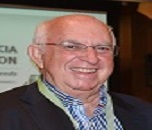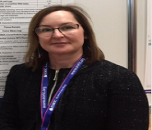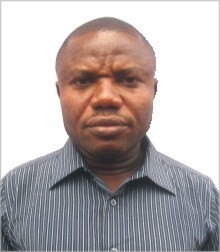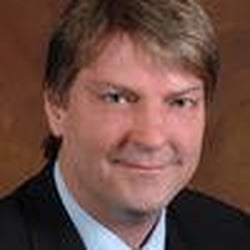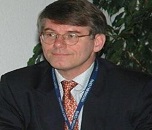Scientific Program
Keynote Session:
Title: HIV drug discovery, research &vaccines
Biography:
Jerald C. Sadoff is currently the Head of Early Development of the Crucell Vaccine Institute which is the Center of Excellence for Vaccine Development for Johnson & Johnson Companies Worldwide. Dr. Sadoff has spent his entire career developing vaccines against a large number of bacterial, viral and parasitic diseases, 11 of which have been licensed for human use and several currently are in Phase IIB and Phase III clinical trials. He currently serves on several IPCAVD Scientific Advisory Boards for NIH sponsored HIV vaccine efforts and is on the NIAID AIDS Vaccine Research Working Group. Over the last 35 years, he has authored over 350 articles, book chapters, and abstracts and has 18 issued patents
Abstract:
TBA
Title: Can immunochemical studies of HIV Env spikes using human monoclonal antibodies inform the design of an HIV vaccine ?
Biography:
PhD, University of Cape Town ( 1961); International Fellow USPHS ,University of California , Berkeley (1965-1966) ; Professor of Virology at several Universities in South Africa and France ( 1967-1977 ) ; Director of CNRS Immunochemistry Laboratory, University of Strasbourg, France ( 1978-2001) .Since 2002 Emeritus CNRS Research Director in Strasbourg. Supervised the research work of 30 PhD students ; published 400 research and review papers and a dozen books in Immunochemistry and Virology ; co-edited the 3rd edition of the Encyclopedia of Virology in 5 volumes published by Elsevier ( 2008 ). Served as Chair of the Virology Division of the International Union of Microbiologial Societies ( IUMS) and as Secretary General of IUMS ( 1987-1999) . Editor-in-Chief of Archives of Virology and J Molecular Recognition; Associate Editor of Advances in Virus Research , Analytical Biochemistry, Frontiers in Immunology , J Immunological Methods, and Bionomina. h-factor : 51
Abstract:
TBA
Title: HIV and migration in Europe
Biography:
Francisco Jose Nunes Antunes received MD and PhD certificates from University of Lisbon. He completed his training in Infectious Diseases at the Hospital de Santa Maria, and in Tropical Medicine at the Instituto de Higiene e Medicina Tropical, in Lisbon. He was Head of the Department of Infectious Diseases at the Hospital de Santa Maria, and Full Professor of Infectious Diseases at the School of Medicine of Lisbon, and Full Professor of Parasitology at the Instituto de Higiene e Medicina Tropical. Currently he is member of the Instituto de Saude Ambiental at the School of Medicine at the Universidade de Lisboa, and collaborate with the School of Medicine of the University Eduardo Mondlane (Maputo- Mocambique) ant the Hospital Dr. Ayres de Menezes (Ministry of Health -S. Tome e Principe) in the fields of HIV and Hepatitis (research and training). He was President of the European Conference of HIV (EACS 1999), European Congress on Tropical Medicine and Tropical Health (2002), and International Congress of Infectious Diseases 2006), and member of several International and European Conferences on HIV, Infectious Diseases and Tropical Medicine. His scientific and research interests include Infectious Diseases, AIDS and Tropical Medicine. He is author and co-author of more than 150 articles on peer reviewed biomedical journals.
Abstract:
TBA
Title: Functional cure for HIV
Biography:
Cecilia Ramirez received her master’s degree at the University of Maryland (College Park, USA) and her Ph.D. degree at the Institut Jacques Monod (Paris) from the Université Paris Diderot. She completed her training at Rutgers University (NJ, USA) as a Post-doctoral fellow and joined the French “Centre National de la Recherché Scientifique” (CNRS) in 1996. She is project leader at the Institut Cochin in Paris. She has focused her research work on the study of viruses-host interactions to understand the molecular mechanisms used by viruses to efficiently multiply by borrowing host’s cell machineries and metabolic pathways. Her team recently showed that spironolactone (SP) is a specific inhibitor of HIV Tat-dependent transcription. They continue to evaluate the transcription block by SP in several latent reservoir models to determine the possibility to use of SP to ‘‘block and lock’’ latent reservoirs leading to a functional cure of HIV as a new strategy to control HIV infection.
Abstract:
TBA
Oral Session 1:
- Oral Session I
Title: Autologous immunotherapy designed to target HIV in latent reservoir
Biography:
Vice President of Translational Medicine at Argos Therapeutics,USA
Abstract:
AGS-004 immunotherapy consists of autologous dendritic cells electroporated with four HIV RNAs encoding autologous Gag, Vpr, Rev and Nef antigens1. AGS-004 is undergoing testing using a kick and kill strategy in combination with the latency reversing drug, Vorinostat. To specifically target virus variants likely to emerge from a patient’s latent reservoir, RT-PCR amplification protocol is applied to HIV generated in supernatants of ex vivo mitogen-stimulated, latently infected CD4+ cells. Up to 24 replicate cultures of activated CD4+ cells were established and monitored for viral outgrowth by p24Gag ELISA. We previously observed that the cultures became positive at different rates with variable levels of p24 measured in each culture, suggesting diversity of emerging species2. To evaluate diversity of the emerging virus, individual clones of RT-PCR-amplified target regions were sequenced using the Sanger method and analyzed by phylogenetic tree analysis. This analysis revealed that clone sequences generally grouped together by their origin culture, demonstrating similarity to one another. In contrast, the clone sequences from different individual cultures clustered separately from one another, indicating the presence of divergent viral species in independent cultures (as demonstrated in Gag example below). Therefore, diverse HIV species are being captured with RT-PCR amplification, both within as well as across the different replicate cultures of CD4+ cells. Using pooled CD4+ cell cultures as a substrate for amplification of RNA antigens, AGS-004 can direct the immune system to specifically target the unique autologous virus species in a patient’s latent reservoir. A clinical trial testing this hypotheses is on-going.

Stephanie Craig Rushing
Project Director, NW Tribal Epidemiology Center Northwest Portland Area Indian Health Board,USATitle: Designing and disseminating culturally relevant sexual health interventions for indigenous youth
Biography:
Abstract:
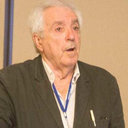
Jean-Marie Andrieu,
Institut de Recherche sur les Vaccins et l'Immunothérapie des Cancers et du Sida", Paris-Descartes University, Paris, FranceTitle: A tolerogenic mucosal vaccine against AIDS
Biography:
Jean-Marie Andrieu is a Professor of Medicine (Hematology) since 1982. He is the Director of the Institute of Research on Vaccines and Immunotherapy of Cancer and AIDS (IRVICS) at Paris-Descartes University. For 30 years, he is interested in the modulation of the immune system in HIV infection.
Abstract:
TBA
Title: TBA
Biography:
Glenda Gray, MBBCH, FCPaed(SA), DSc (honoris causa), is the President & CEO of the South African Medical Research Council . She is a Research Professor of Paediatrics at the University of the Witwatersrand, and a director at the Perinatal HIV Research Unit in Soweto. Trained as a paediatrician, she was awarded a Fogarty Training Fellowship at Columbia University in 1999 and also completed an intensive program on clinical epidemiology at Cornell University. Based in South Africa, she is the Co-PI of the HVTN and Director of HVTN Africa Programs. She is a member of the Vaccine and Infectious Disease Division at the Fred Hutch. She has expertise in the field of mother to child transmission of HIV, adolescent HIV prevention and treatment, and HIV vaccine and microbicide research.
She received the Femina "Woman of the Nineties" Award, for her contribution to Perinatal HIV Research. In 2002, together with James McIntyre, she was awarded the Nelson Mandela Health and Human Rights Award for pioneering work done in the field of Mother-to-Child Transmission of HIV-1. Glenda was awarded the IAPAC "Hero of Medicine" award for work done in the field of HIV treatment in children and adults. In 2009, together with James McIntyre she received the N'Galy-Mann lectureship at CROI in recognition of their HIV research contribution in South Africa. She is a member of the Academy of Science in South Africa, Chair of their Standing Committee on Health and has served on a number of expert panels for the Academy in the field of infant health, nutrition and HIV. She was elected as a foreign associate into the US Institute of Medicine of the National Academy of Sciences and serves on their Board of Global Health. She is also a Fellow of the American Academy of Microbiology. She serves on IAVI’s Scientific Advisory Committee, and is a member of the Scripps CHAVI-ID Scientific Advisory Board. In 2013, she received the Order of Mapungubwe, South Africa’s highest honor, for achievements in the international arena which have served South Africa's interests. In the same year she received the EDCTP Outstanding African Scientist award.
Abstract:
TBA
Title: Oral bacterial community of HIV-1-infected Brazilian children revealed by next-generation DNA sequencing
Biography:
Lucio Souza Gonçalves, DDS, MSc, PhD is full-time Researcher and Professor of Periodontology (Estacio de Sá University, Brazil). He received his Dental Degree (1988), Master’s degree in Periodontology (2000), and PhD in Oral Microbiology (2006) from Federal University of Rio de Janeiro, Brazil. He also completed a Postdoctoral Research Fellowship (University of Otago – 2014). Since 1998, he has been teaching periodontology, oral microbiology, biostatistics, epidemiology and clinical dentistry. In addition, he has been working actively as an ad hoc reviewer for several international journals in oral science (Journal of Periodontology, Journal of Periodontal Research, Oral Diseases, International Dental Journal, etc).
Abstract:
This study compared the oral bacterial community between HIV+ and HIV- Brazilian children. 27 HIV+ and 30 HIV- were enrolled in this study. Total saliva, biofilm from the dorsal tongue, and biofilm pooled from supragingival and subgingival sites were collected from all children. Genomic DNA was purified from all the oral samples and sequenced using Ion Torrent technology. The most represented phyla were Firmicutes (~58%) and Fusobacteria (~14%), In the supragingival biofilm, the phylum Firmicutes and genus Streptococcus were more frequent in HIV+ (~95% and 78%, respectively) than in HIV- individuals (~40% and 24%, respectively). In contrast, Neisseria spp. and Leptotrichia spp. showed relative abundance of approximately 13% and 15%, respectively, in HIV- samples; however these genera were undetected in HIV+ individuals. In the subgingival biofilm and on the tongue of HIV-, the relative abundance of the Veillonella spp. and Prevotella spp. genera were higher compared to HIV+. On the tongue, the genera with greater relative abundance in HIV+ were Neisseria spp. and Leptotrichia spp. In saliva, there was a slight difference in relative abundance of the genus Prevotella observed between HIV+ and non-HIV- (15% and 7%, respectively). While the Chao diversity index revealed an increase in the richness of sub- and supragingival biofilms in the HIV+ samples compared with HIV-, the Shannon diversity index was higher in HIV+ only for the biofilm supragingival samples. In conclusion, HIV+ children present an oral bacterial community with lower complexity than in HIV-; however, they have a higher frequency of the phyla Firmicutes and streptococci.
Title: Pattern of presentation and factors associated HIV progression in a referral clinic in South Eastern Nigeria
Biography:
Dr Uzochukwu Ofonakara is a public health physician with MBBS, MPH, MSc (Epidemiology ),MSc (pharmacology) and is on his PhD pharmacology at the University of Lagos. He a senior resident at Federal Teaching Hospital Abakaliki and also the NPHCDA State coordinator for Delta State. He has presented at international conferences
Abstract:
Introduction
HIV/AIDS continues to be a disease of public health importance especially in developing countries with high rate of unemployment, poverty and hunger. The aim of this study was to determine the pattern of presentation and factors associated with HIV/AIDS progression in a referral clinic in south eastern Nigeria
Methodology
A cross-sectional descriptive study was carried out among 349 HIV positive patients attending HIV clinic in Ebonyi state. Data was collected using anonymous pre-tested interviewer administered questionnaire and review of medical records. Odd ratios and 95% confidence intervals were computed and P values of < 0.05 were considered statistically significant.
Result
Three hundred and forty nine adult respondents attending ARV clinic took part in the study. Of the 349 subjects, 128(36.7%) were males and 221(63.3%) were females. The age range was 17 to 67 years with a mean and standard deviation of 40.40 ± 9.96 years. The mean BMI was 24.067( SD 5.105) and Waist Hip Ratio was 0.96, while the mean BP was 108.07/68.23 (SD 17.59/11.81. The majority of the respondents, 323(92.6%) had HIV 1 while 26(7.4%) had both HIV 1&2. Majority of the HIV positive patients 338(96.8%) were in clinical stage 2 followed by 10(2.9%) in stage 3 while 342 (98%) were on ART. The mean CD4 count of the respondents was 442.45 with SD of 252.664 while the mean ESR was 42.48 with SD 88.878 and mean viral count was 43.48 with SD of 88.87. The highest CD 4 count was among the age group 11-20 with 645.5±253.85 while the lowest CD4 count was among the age group 61-70 with CD4 count of 384.56±163.5. For marital status, the highest CD4 count was among the single with CD4 count of 460.35±258.13 while the lowest was among the married with CD4 count of 311.0±240.76. The CD4 count of urban dwellers 463.47±259.67 was also higher than that of rural dwellers 407.97±237.75.
Being married (p<0.005) and place of residence (p< 0.053) were significantly associated with worse disease progression.
Conclusion
Efforts targeted at raising standard of management of HIV/AIDS and care for people living with the disease is needed in rural communities with worse disease progression. Programs should be directed at older married males
Keynote Session:
Title: Dendritic cells trafficking into the CNS in response to inflammation and infection
Biography:
Dr. Jain is a professor in the Department of Microbiology & Immunology at Drexel University College of Medicine.PhD in Microbiology - Central Drug Research Institute, Dr. B.R. Ambdkar Agra University, India (2001)Research interests: Dendritic cell (DC) biology and immunotherapeutic potential against human chronic viral infections (HTLV-1, HIV-1, and HIV/HCV co-infection) as well as neuroinflammatory diseases associated with retroviral infection (HAM/TSP, and NeuroAIDS) or inflammation (multiple sclerosis).
Abstract:
TBA
Title: Valorization of agroindustry by-products through fiber and minerals fortification of wheat bread
Biography:
Feng Gao is a professor at Duke University in the USA and at Jilin University in China. Dr. Gao has a long-standing interest in elucidating the origin, evolution and genetic variation of human and simian immunodeficiency viruses (HIV/SIV), as well as in studying gene function, pathogenesis and vaccines of HIV/SIV from the evolutionary perspective. He discovered that HIV-1 was originated from chimpanzees and his work also provided the genetic evidence of the origin of HIV-2 from sooty mangabey monkeys. He developed the consensus gene vaccine approach for induction of cross-subtype immune responses by reducing the distances between epidemic HIV-1 strains and vaccine immunogens. He recently studied the coevolution of broadly neutralizing antibodies (bnAb) and HIV-1 in the same infected host and discovered a cooperative mechanism between different bnAbs to drive maturation of a bnAb lineage. He currently studies bnAb maturation mechanisms in humans and non-human primates, impacts of immune escape mutations on fitness of their cognate transmitted/founder viruses, development of autoreactivity and polyreactivity during bnAb maturation, and roles of maternal neutralizing antibodies in mother-to-child transmission of HIV-1.
Abstract:
TBA
Title: Those impacts about herpes simplex virus-2 for hiv-1 procurement and transmission: a audit about two covering epidemics
Biography:
Dr. Scurlock earned his medical degree from the University of Arkansas for Medical Sciences in Little Rock, Arkansas. He completed his internship and residency at the Medical College of Virginia, Riverside Family Practice Program in Newport News, Virginia. In 1997, he started his current practice in Brookhaven as part of the Piedmont Physicians Group. Dr. Scurlock is certified by the American Board of Family Practice and a member of the American Academy of Family Practice. Dr. Scurlock likes to spend time away from the office by volunteering his time and expertise on overseas medical mission trips; most recently to Kenya, the South Pacific Islands of American Samoa, Solomon Islands, Marshall Islands and closer to home in Honduras and Guatemala. Dr. Scurlock encourages his patients to participate in their own health care by educating themselves and adopting a stress-free, healthy lifestyle including daily exercise to maintain ideal weight, avoiding tobacco products and eating a healthy diet. Through regular exams and monitoring, potential threatening health issues such as high blood pressure, elevated glucose, cholesterol and cancer can be prevented. Visit our practice websitefor more infromation.
Abstract:
TBA
Oral Session 1:
- Oral Session II
Keynote Session:
Oral Session 1:
- Oral Session III
Title: Zoonotic diseases threat needs sharing of information and new diagnostic systems in less developed countries
Biography:
Abstract:




